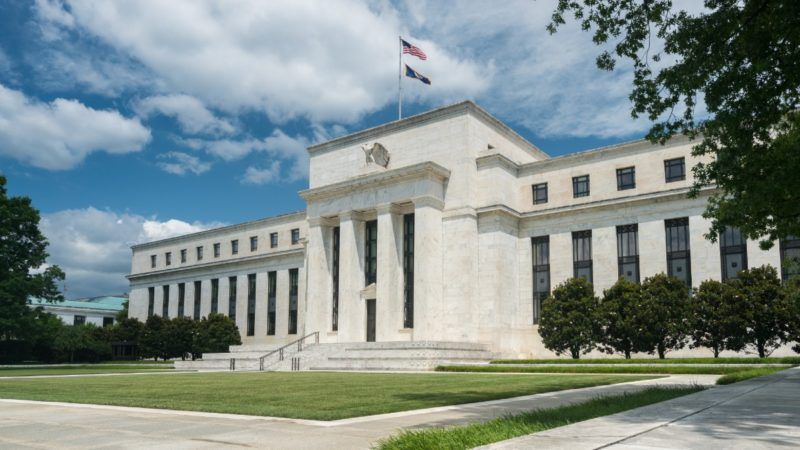Negative Interest Rates Will Damage an Already Crippled Economy
Some economists believe that a negative interest rate policy will stimulate the economy by reducing the cost of loans. That isn’t how it has worked in practice.

The Federal Reserve Bank of St. Louis just published a paper suggesting the Federal Reserve should use negative interest rates to buoy the economy in the wake of the COVID-19 lockdowns. But negative interest rates have never worked before, and it's foolish to expect them to work now.
In normal times, you expect to receive interest income on a bank deposit. That lets your savings grow. Negative interest rates turn that idea on its head. With an annual interest rate of -1 percent, for example, if you deposit $100 in the bank, a year later your savings will have shrunk to $99.
Some economists believe that a negative interest rate policy will stimulate the economy by reducing the cost of loans, thus making it easier for businesses to grow. That isn't how it has worked in practice.
"The first central bank that went to negative interest rates was the Riksbank in Sweden, and they were an utter failure," says Steve Hanke, an economist at Johns Hopkins. The policy, adopted in 2015, didn't help economic growth in any way. In fact, it seemed to hurt it.
In 2019, a team of economists that included Larry Summers, the former U.S. secretary of the treasury, published a study of the Swedish experiment. It found that cutting interest rates to just -0.5 percent reduced economic output. The reduction was just a fraction of a percent. But it wasn't an increase, and increasing economic growth was the goal of the policy.
Worse still: While the official borrowing rates set by the Riksbank were negative, the cost of borrowing money from a commercial bank actually went up, since banks can set their own rates. So it didn't help the business community get cheaper loans either.
The reasons the policy failed were not peculiar to Sweden. The same problems would probably afflict any similar effort in the United States.
First, let's deal with the reduced output. It's simply wrong to assume that the cost of borrowing money is related to how well the economy performs.
"What makes the economy expand is increased productivity," says Robert Wright, a senior fellow at the American Institute for Economic Research. Productivity growth means producing more of the same stuff, but with the same level of input, he says. That might include using better, more efficient machinery, or hiring workers with better skills. A productivity breakthrough usually requires businesses to try new production methods to see which ones work and which don't. In other words, there is a lot of risk and a lot of failure.
In the COVID-19 environment, most entrepreneurs are rightly averse to risk. If your company makes a breakthrough that would increase productivity, it isn't entirely clear whether any profits would result from it. "Many business people do not feel secure about the future prospects of them being able to keep the fruits of their labor," he says. "Negative interest rates will absolutely not help change those perceptions and incentives."
The other big problem with negative interest rates is that it messes up the banking system. Banks make money from the difference between what they pay savers and what they charge on loans made to borrowers. When depositors get 2 percent on their money and the bank charges 6 percent for a loan, banks make a lot of money. "As a result, the bank will want to make a lot of loans," Wright says. Such loan growth does help businesses expand, and it benefits the banking system with increased profits.
But when interest rates get pushed into negative territory, that simple but effective banking model gets destroyed. If your savings account is guaranteed to shrink, Wright asks, "why would you put your money in the bank?" You'd have a good reason to prefer putting your money in a safe instead. And with lower deposits, the bank would have less money to lend. This is no way to buoy an economy.


Show Comments (50)